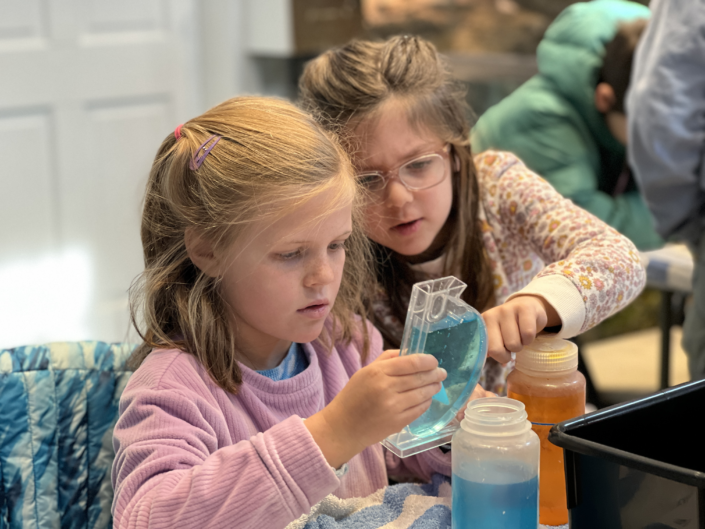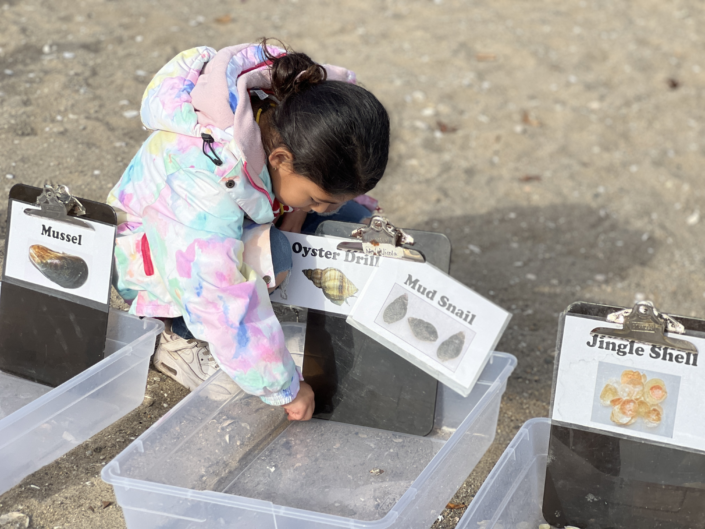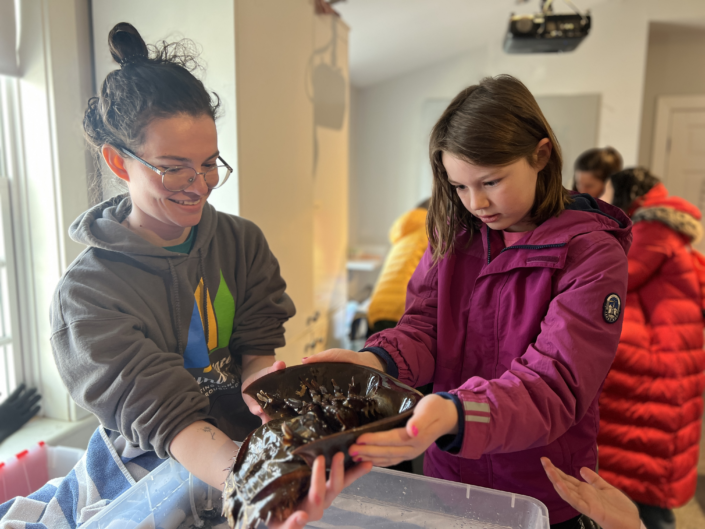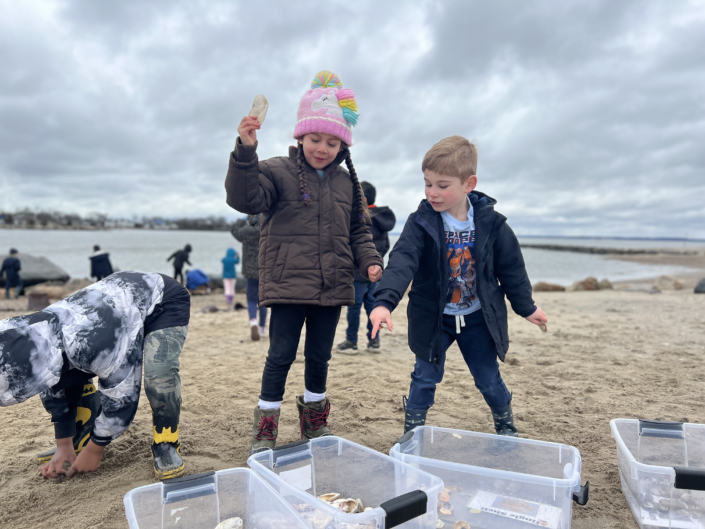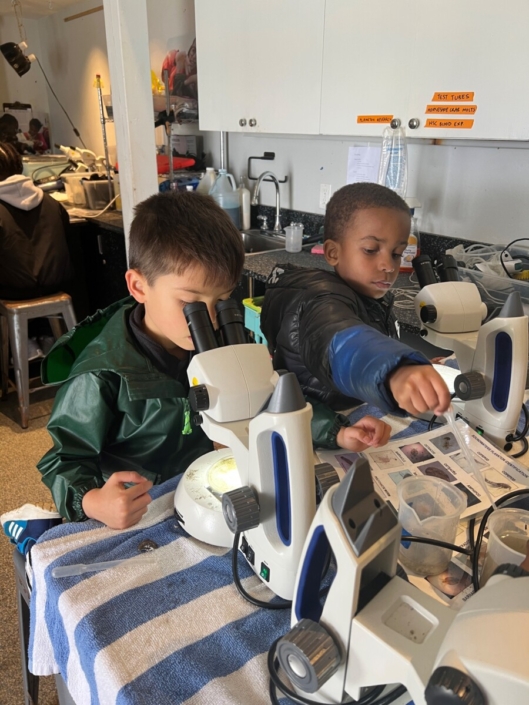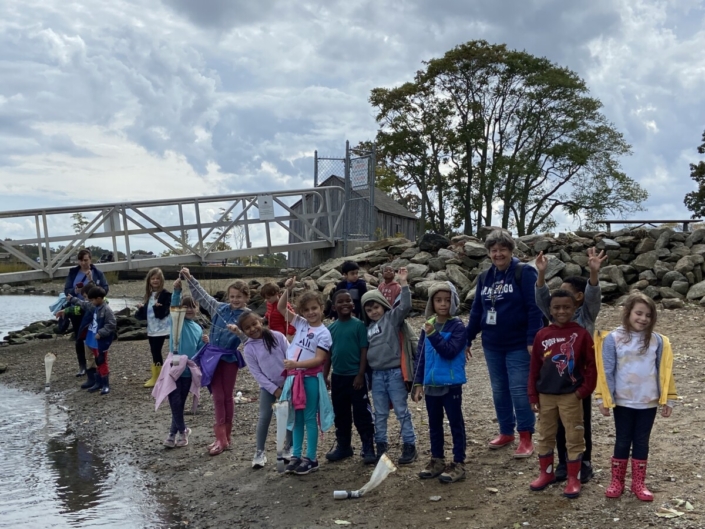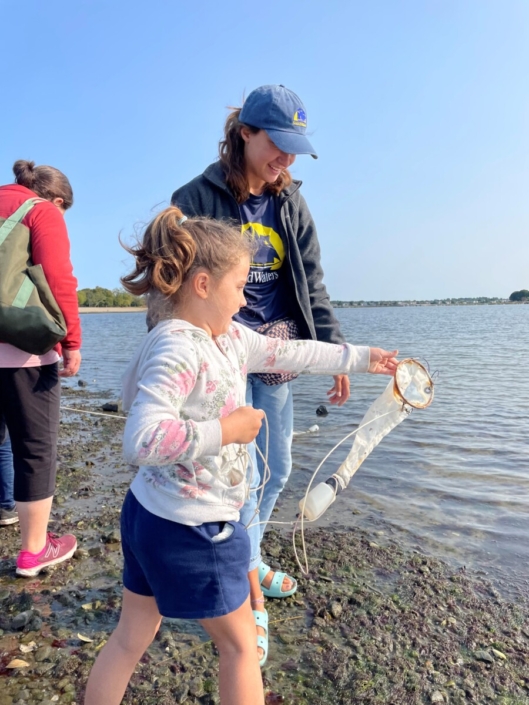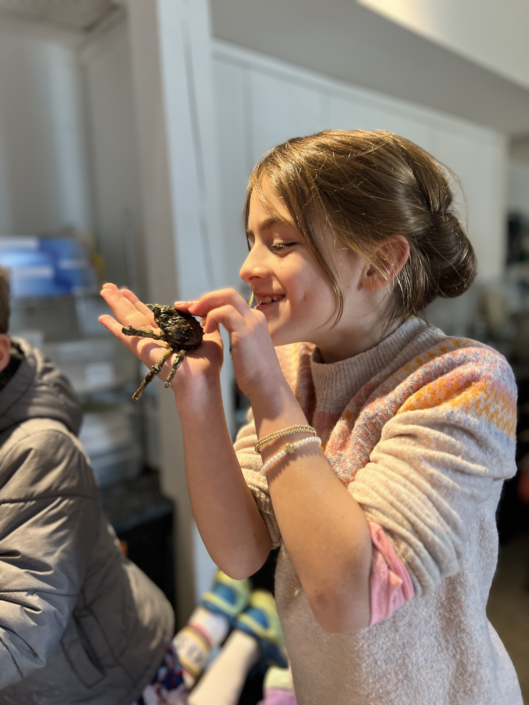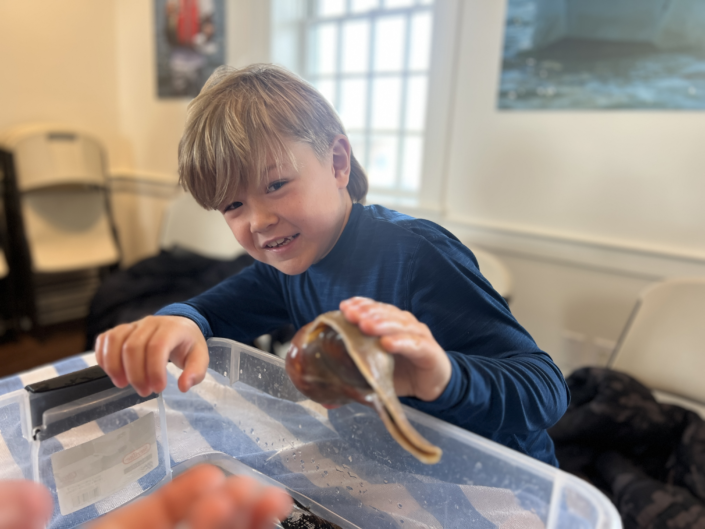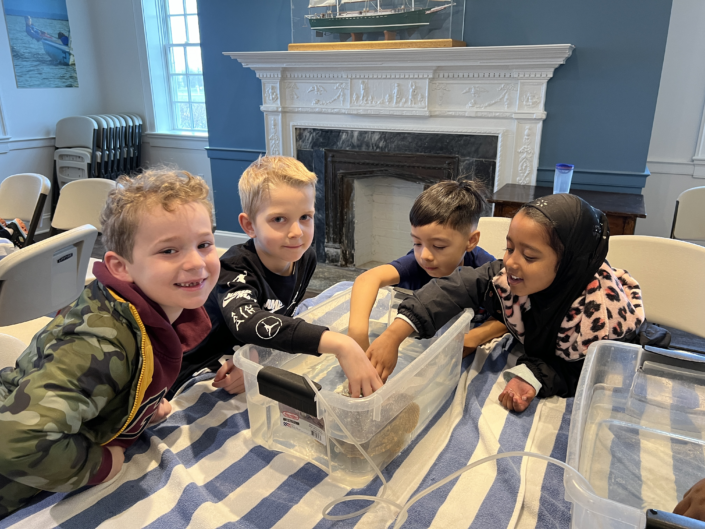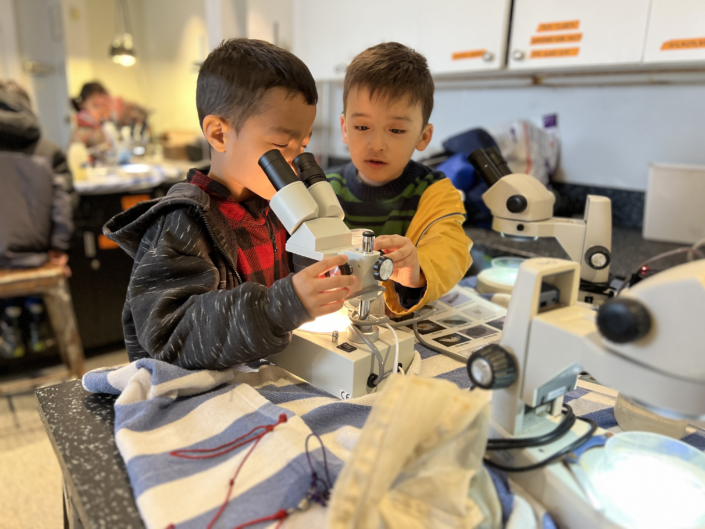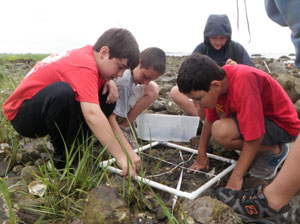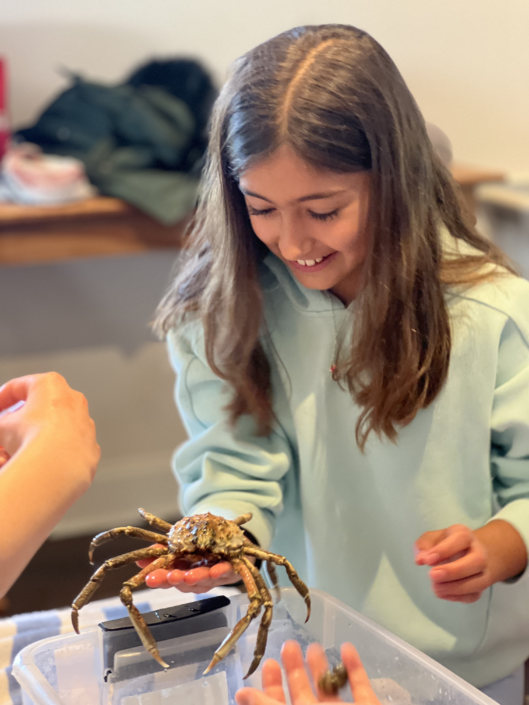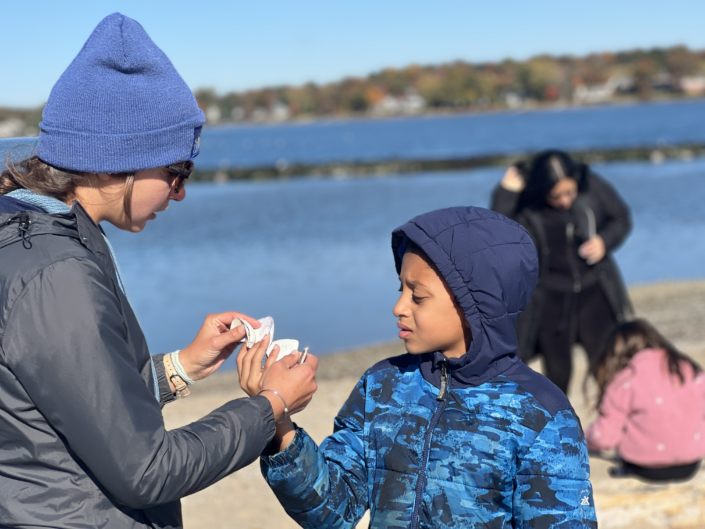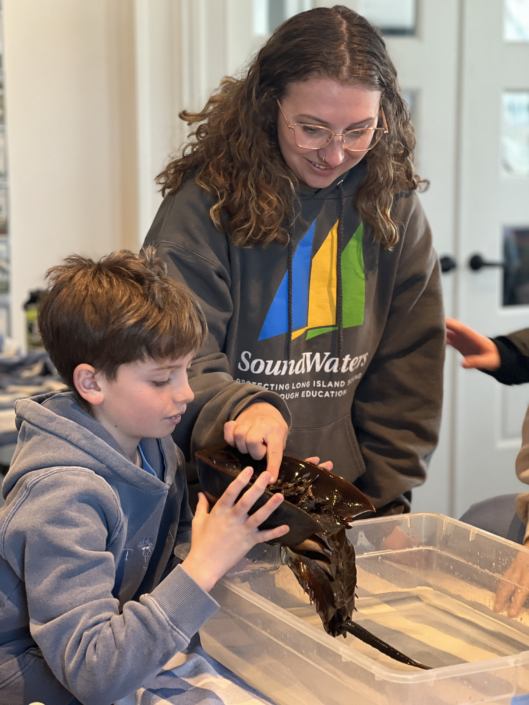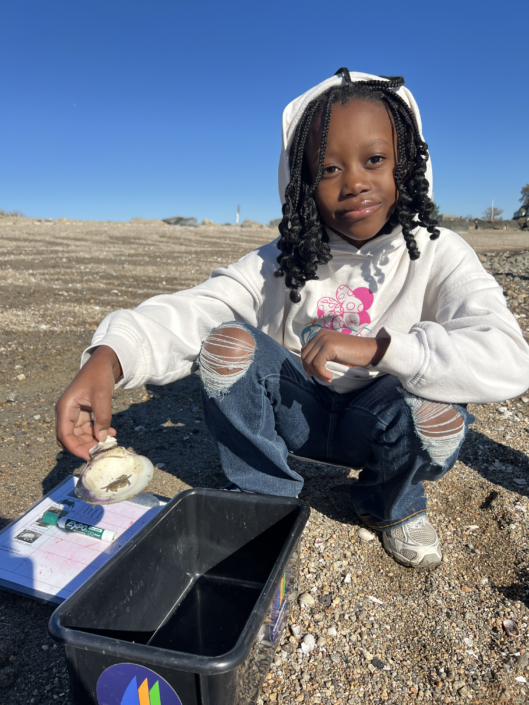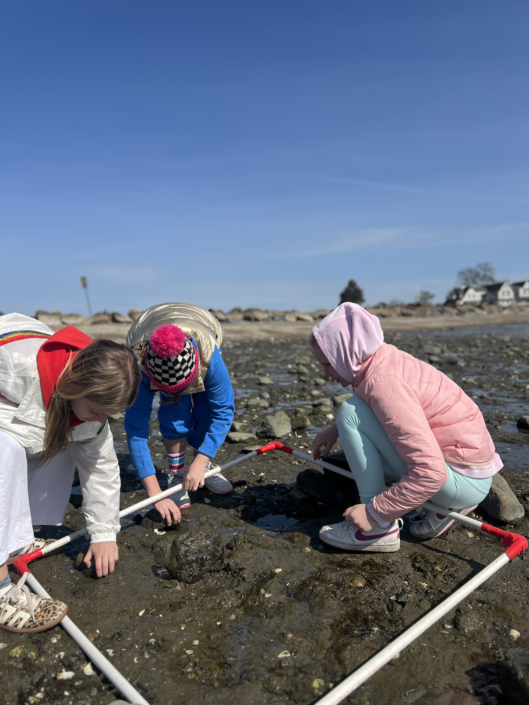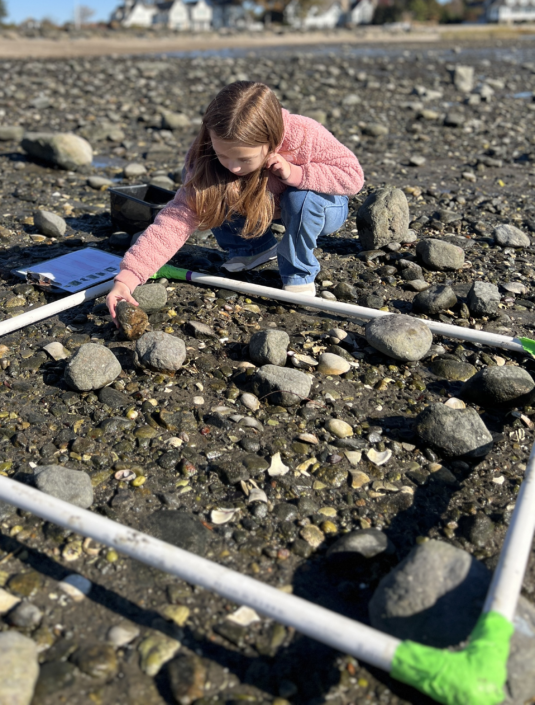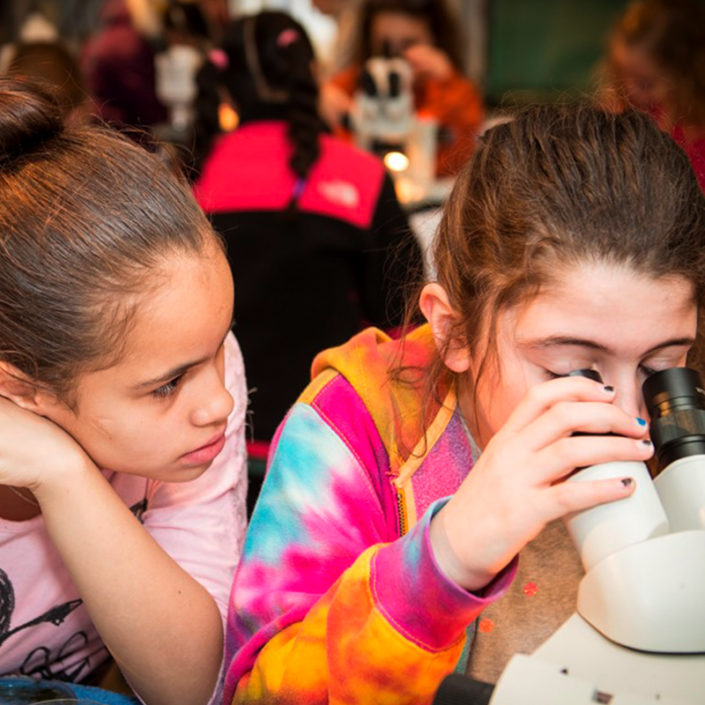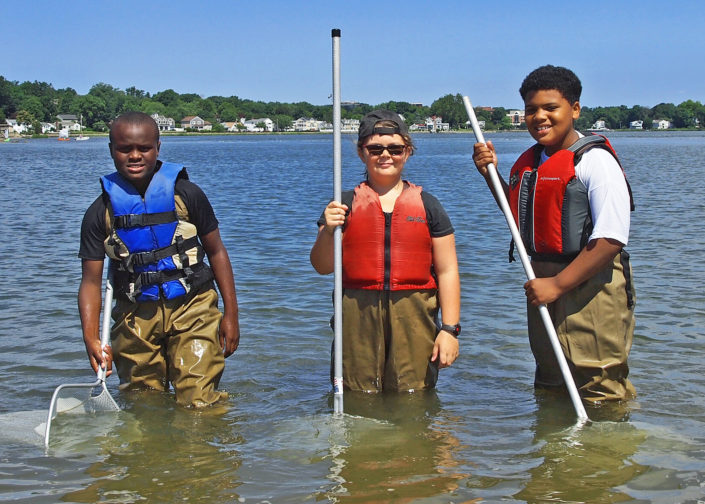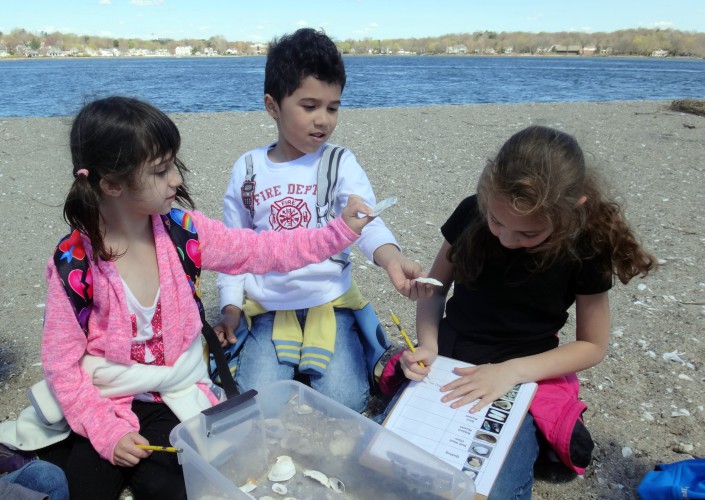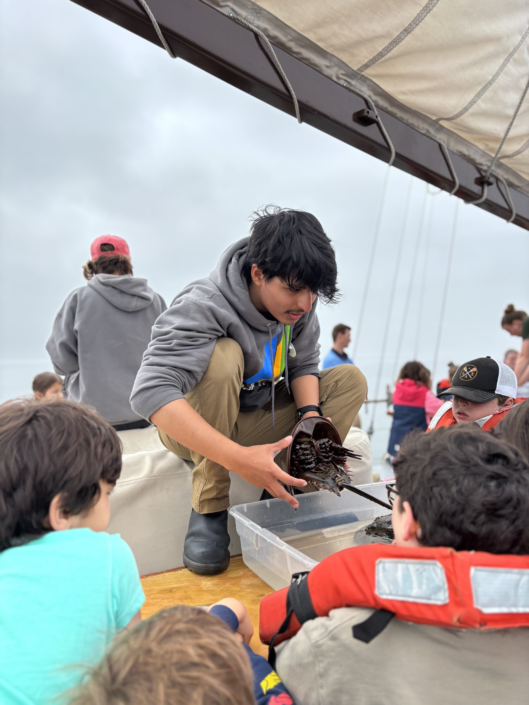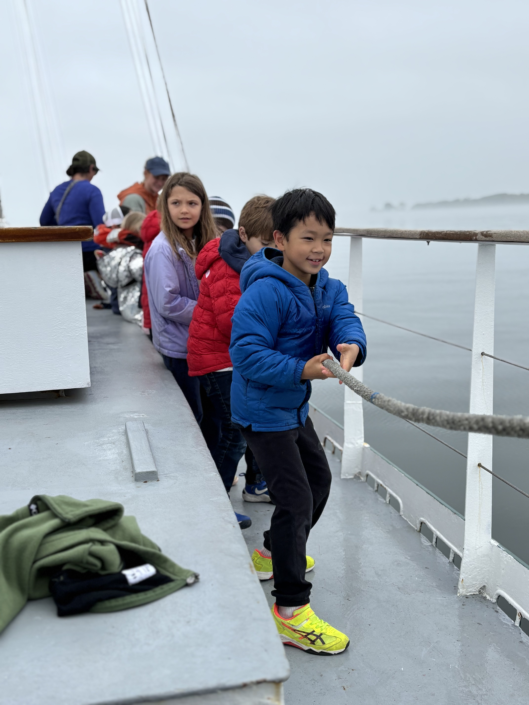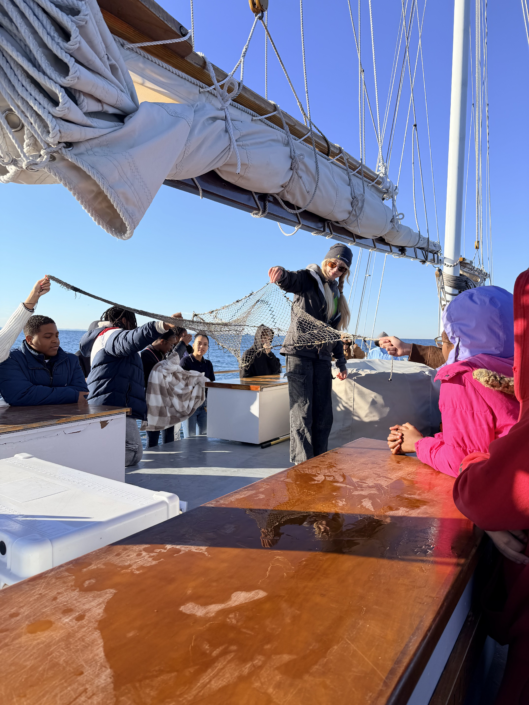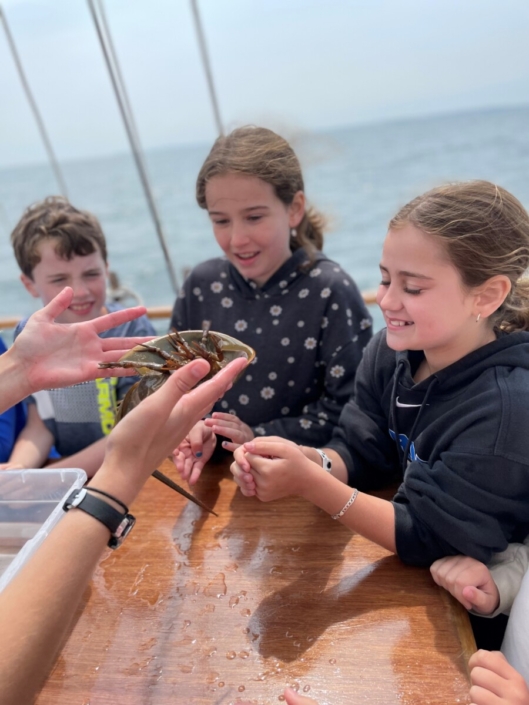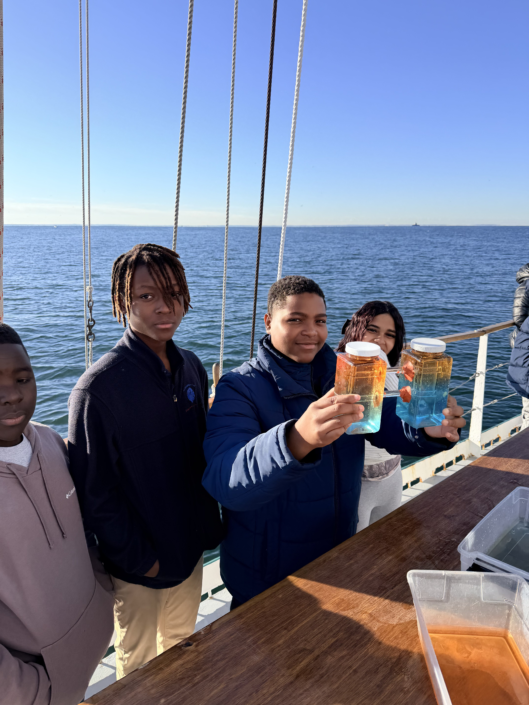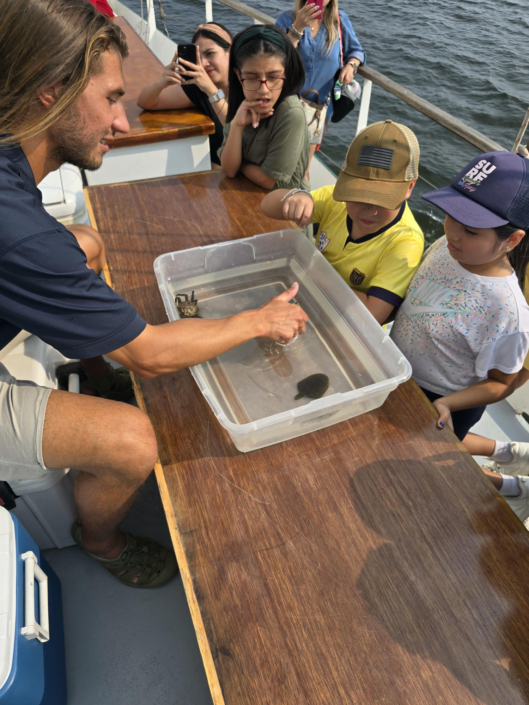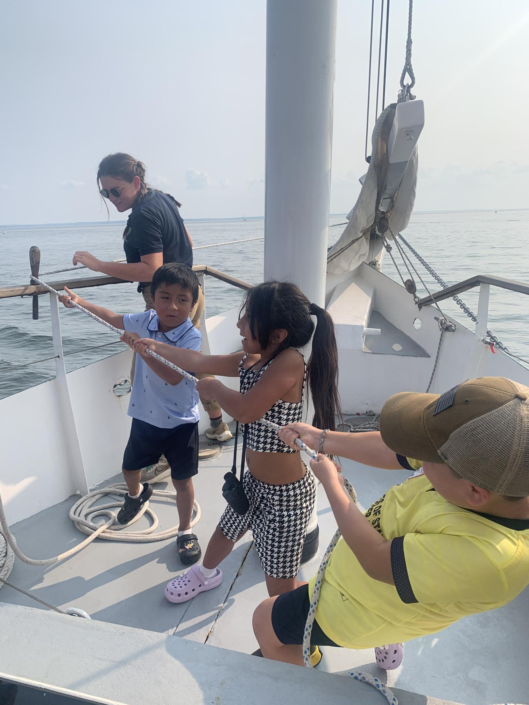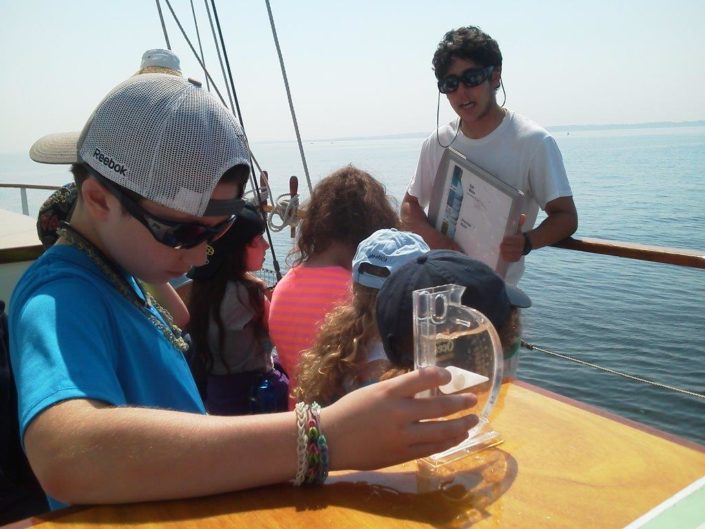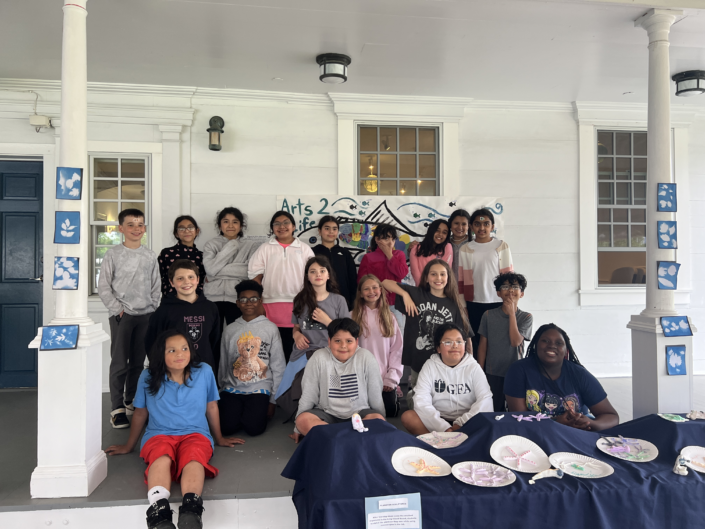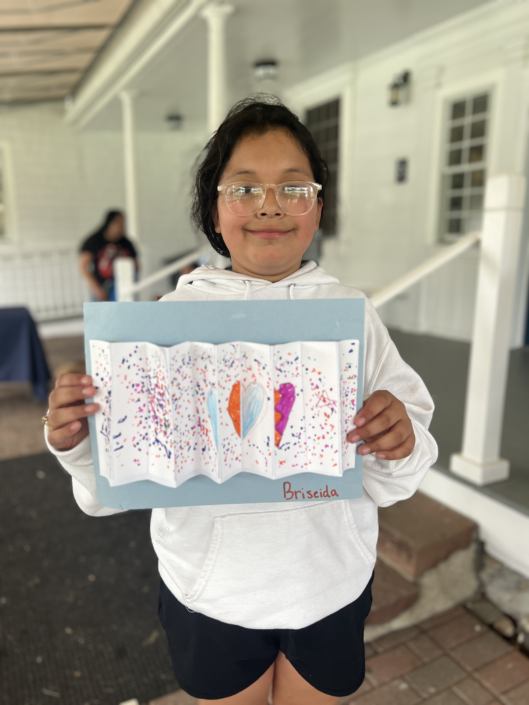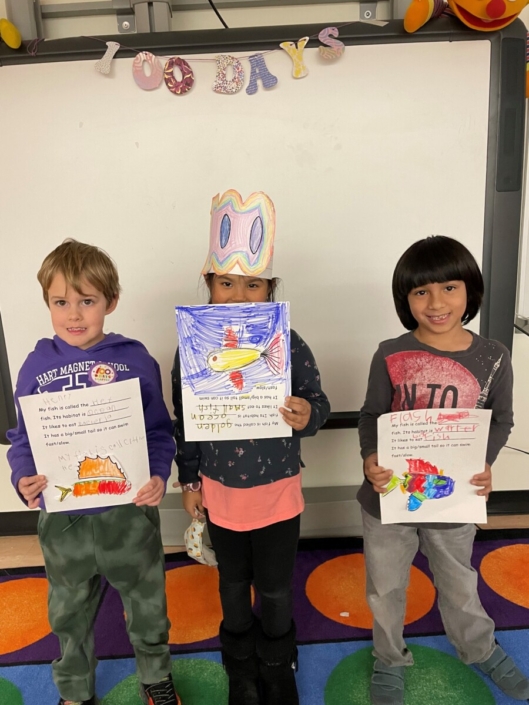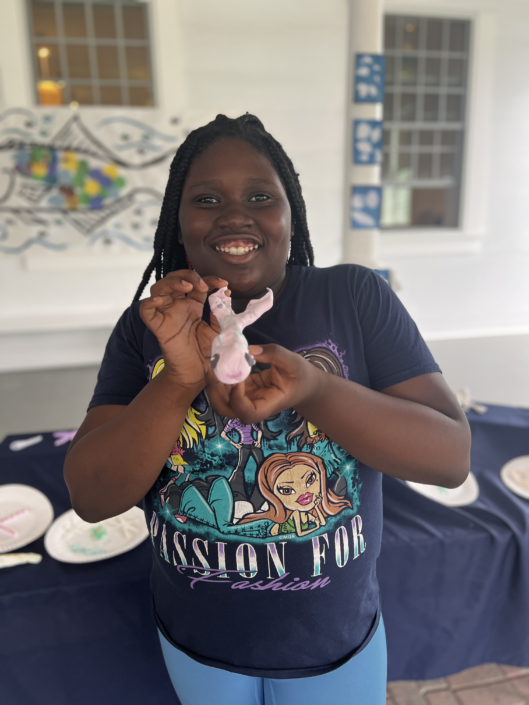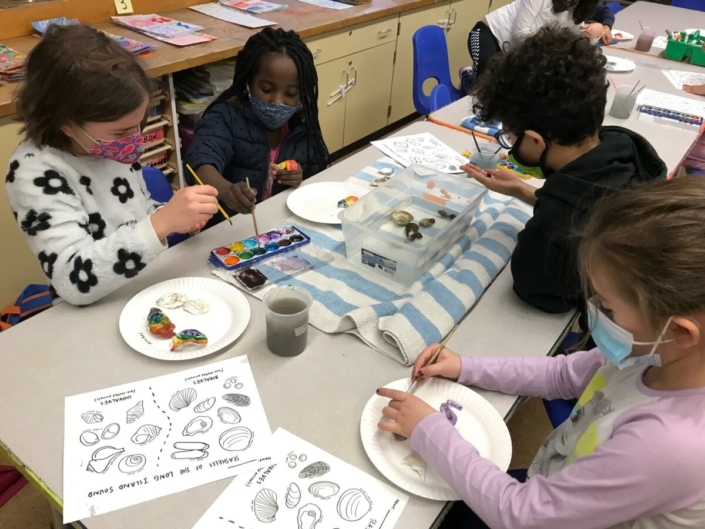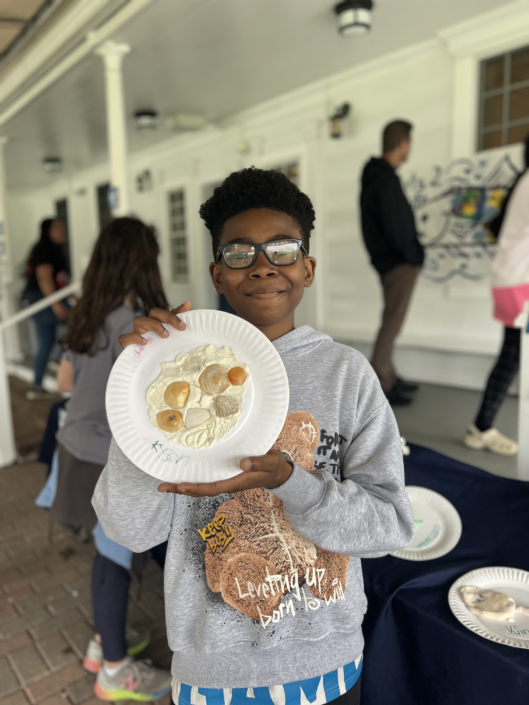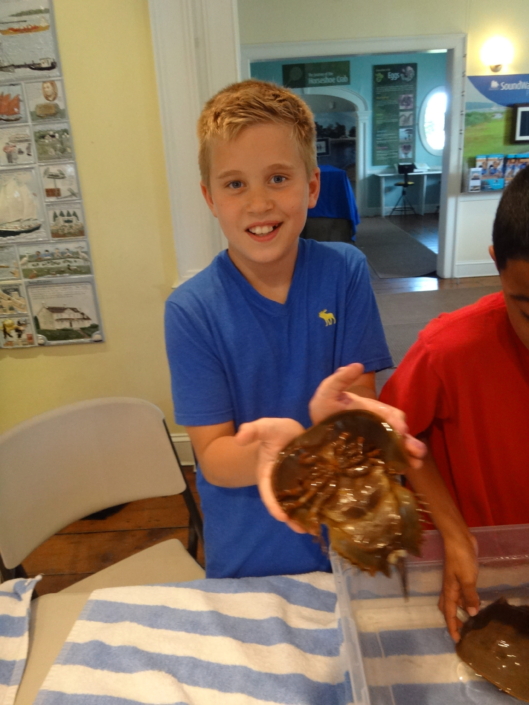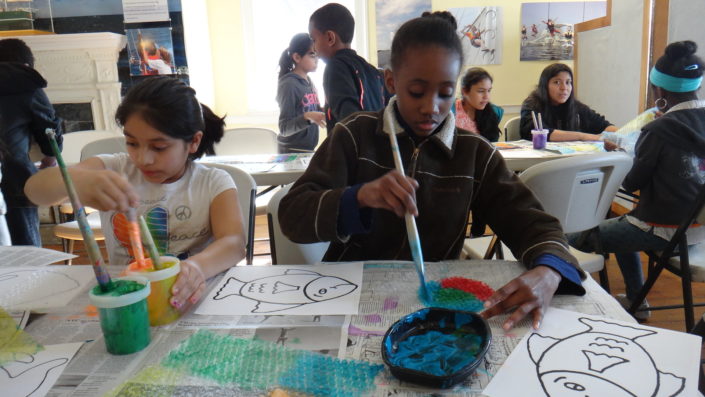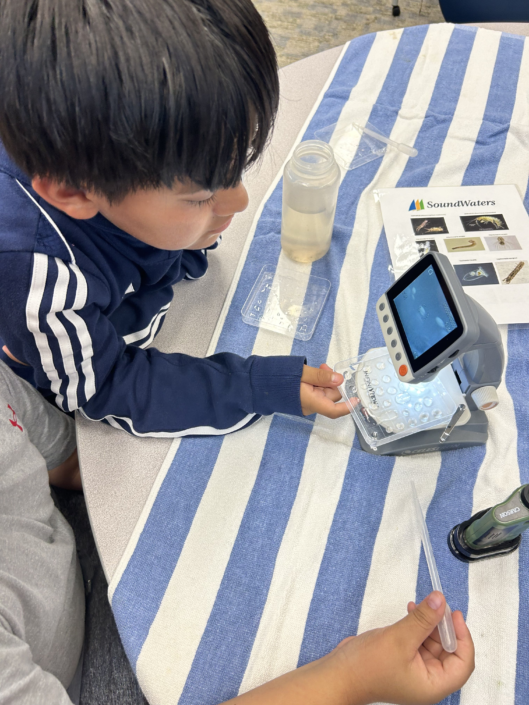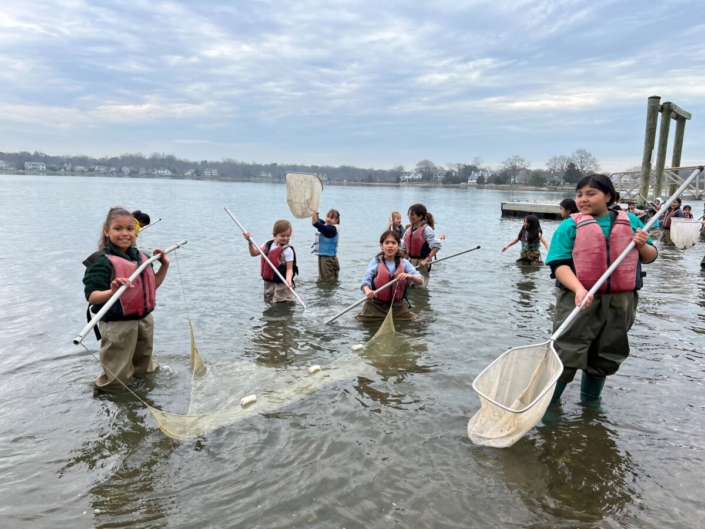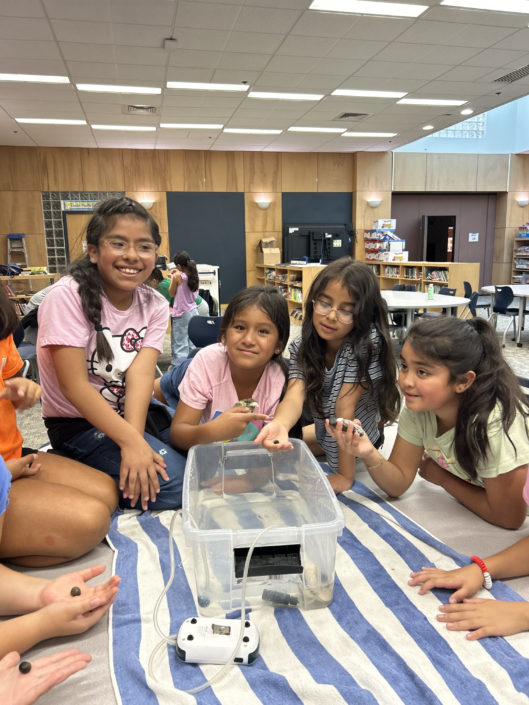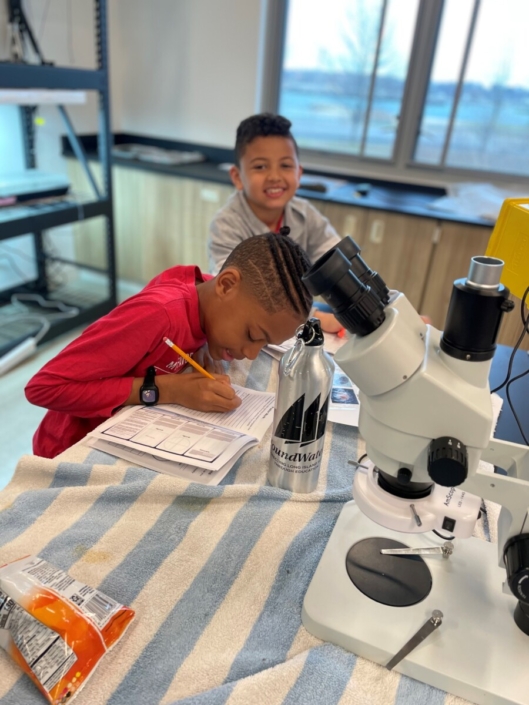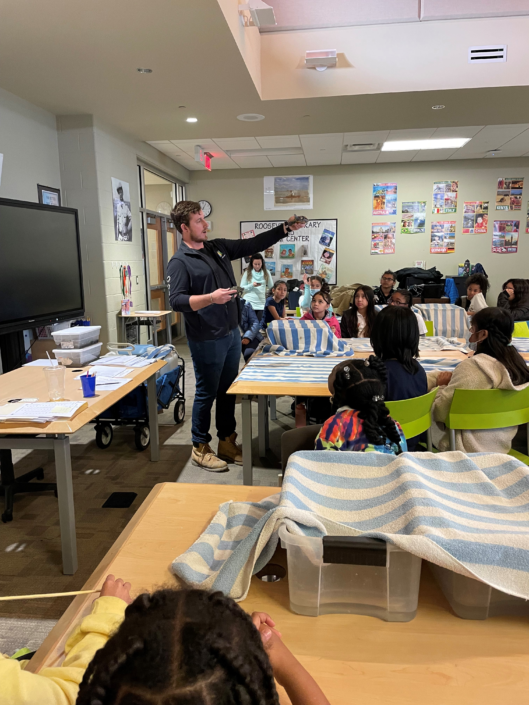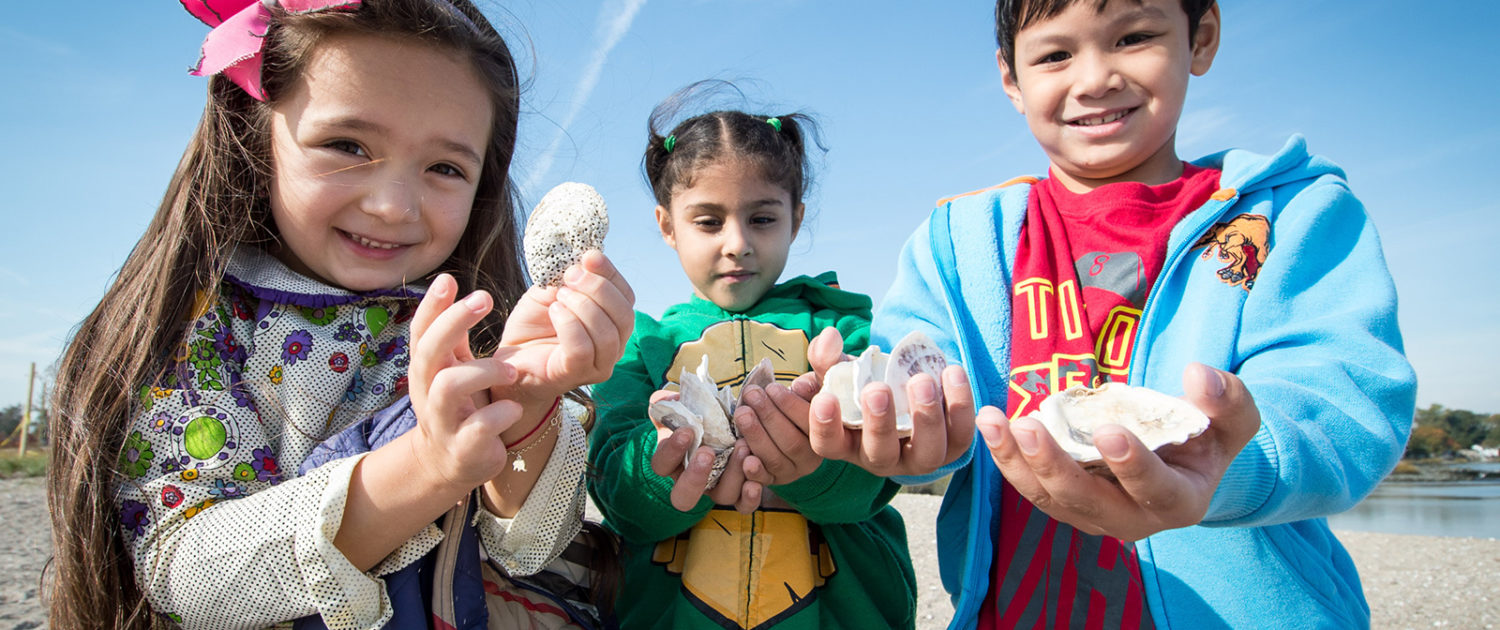Island Explorers – Grades 3-5
Island Explorers provides students with a critical link to the most significant natural resource in the region: Long Island Sound. Children study seas and oceans, but they have only limited opportunity to visit their own coastal environment and see key concepts (such as habitat, ecology, and biodiversity) in a real and vital way. This program takes place in the school classroom and at SoundWaters’ coastal center.
Island Explorers is funded in part by the Oaklawn Foundation Scholarship Fund for Education.
Activities
In School Component
Learn all about Long Island Sound and what makes it so special! A SoundWaters instructor will guide you through the basics of local geography and different types of water you might find, including a hands-on demonstration of the special type of water found in the Sound. Then, explore what you’ve learned through three stations:
- Abiotic vs Biotic: What does it mean that something is living? How can we determine that something is alive – what does it need? Put your hypotheses to the test with a little detective work – which of our mystery items came from living creatures?
- Animal Adaptations: Get acquainted with some of the fascinating creatures that call Long Island Sound home! Learn some of the special ways in which each type of animal survives in its habitat, then discover these traits for yourself. Touch and hold living animals and see what clues we can discover about their ways of life. Many of these animals can be found along the shores of the Sound; get a whole new perspective on our local environment.
- Geography: Students will learn mapping skills to highlight the Long Island Sound watershed topography and practice how we fit in to local geography.
Field Study Experiments
Water Mystery and Enviro-scape Investigations
Not all water is created equal! Did you know that there is more than one kind? Learn all about the different kinds of water found around Connecticut, and then use your knowledge to solve a mystery: which water sample came from where? Use scientific equipment and some detective work to discover the answer. Then, get a closer look at the way water moves through the environment with a hands-on demonstration: build your own town! What does it need? How do people use the roads, buildings, and natural surroundings? What might they leave behind? And what will happen to our town as it begins to rain?
Animal Adaptations
Get acquainted with some of the fascinating creatures that call Long Island Sound home! Learn some of the special ways in which each type of animal survives in its habitat, then discover these traits for yourself. Touch and hold living animals and see what clues we can discover about their ways of life. Many of these animals can be found along the shores of the Sound; get a whole new perspective on our local environment.
Sandy Beach Exploration
Go on a Long Island Sound scavenger hunt! Many creatures leave shells behind for us to discover; what can we learn from them? Use the same simple equipment as a professional scientist to see what we can learn about the populations of our local animals. Identify different types of shells and practice some math skills along the way as we count and tally our findings. Finally, discover some of the secrets of the animals that made these shells!
Rocky Shore Populations Study & Exploration
A whole hidden world awaits along the shores of Long Island Sound! The rocks revealed by low tide are home to some amazing animals. Learn about what it takes to survive “in between the tides,” and what sorts of creatures we might find. Explore this habitat, seeking out these animals where they hide. Examine your catch – what did we find? Tally the results – do all these animals belong? And if not, where did they come from?
Plankton Sampling & Analysis
Explore the water at a whole new scale! Learn all about plankton, the tiniest creatures of the Long Island Sound! Then, use your newfound knowledge to collect them from their habitat using special equipment. Examine your catch in our laboratory with real microscopes, and see if you can identify what’s living along our shore! Which will always be tiny? Which will grow up into more familiar-looking creatures? Any why are plankton so important, anyway?
Science on the Sound – Floating Classroom
Welcome aboard the schooner SoundWaters!
Discover Long Island Sound’s ecology and biology while sailing aboard the schooner SoundWaters. Your students will investigate how plants and animals survive daily environmental changes, examine macro and microscopic organisms, raise the sails and more! This 2.5-hour program offers a rigorous STEM investigation into habitats, animal adaptations, water quality and food web/bio accumulation. Rich with hands-on experiments, this program is geared to your grade level.
Overview of Activities:
Our shipboard learning is focused on hands-on activities that allow our students to act as field scientists. They will use real scientific tools to collect data, make observations, and understand the ways we impact and are impacted by the Long Island Sound. Students will be engaged in active learning while also having the opportunity to appreciate and develop a deeper connection to one of our most valuable natural resources.
Activities
Water sampling– How can we learn about Long Island Sound without looking at the water itself? Take samples of water from different locations and use tools to take measurements and compare them in order to learn more about the way water quality affects the health of the Sound.
Intertidal habitats– Examine a model of the rocky intertidal environment and meet and hold some of the creatures that call it home. Get your hands dirty and learn how the intertidal zone is impacted by human activities, and how we are affected by it.
Trawling– Deploy and retrieve the trawl net in order to learn about some of the equipment that field scientists use to study biodiversity and to come face-to-face with some of the residents of Long Island Sound. Collect, study, and touch animals from the lowest levels of the Sound.
Raising sails– Work together to set sail! Using a bit of muscle, we can turn our 80-foot floating classroom into a quiet, emissions-free way to travel Long Island Sound as it has been traveled for hundreds of years.
Field observations– Take a moment to simply observe the Sound and use your senses to determine the conditions for your field study for that day. Compare how these conditions differ from what you typically experience and understand what a special and unique place Long Island Sound is.
Plankton sampling– Take a closer look at the critical (but often tiny) members of Long Island Sound that fill its waters. Use a plankton net to retrieve a sample of plankton and use field scopes in order to identify what species can be found here. Discuss the role that plankton play in the ocean food web and how they directly affect us, even on land.
Arts to Life (After-School)
SoundWaters Arts to Life after-school program is a hands-on, interactive science enrichment and environmental education program for students in grades 3-5. The program combines science with a number of art forms – photography, painting and poetry – to emphasize key literacy in science, reading and writing. During the program twenty elementary students participate in eight three-hour, after school classes that take place outside in Cove Island Park and inside the aquarium and laboratory at the SoundWaters Coastal Center.
The outdoor component of each session will focus on hands-on experiments studying the different habitats and organisms that flourish amid the salt marshes, beaches, tidal flats and forests of Cove Island Park. Activities in our lab and aquarium will vary to include arts (drawing, painting and photography) and laboratory science (analyzing organisms using microscopes). The media will differ from week to week but the focus will remain the same: exciting, hands-on activities that engage students in observing and studying the natural world through the lenses of arts and science. Each session will also include a sail on the schooner SoundWaters, where students can experience the thrill of trawling for fish, examining plankton, and learning about water flow though the ecosystem.
Discovery Team (After-School)
SoundWaters’ “Discovery Team” After School Programs are hands-on, interactive enrichment programs designed to support and enhance learning in Stamford elementary school students. Up to fifteen students learn about the ecology of Long Island Sound in one-hour sessions, once each week, in series that last for six to twelve weeks. Typically, students in each after school series enroll in mixed age-group sessions for Kindergarten & 1st Grade, 2nd & 3rd Grade or 4th & 5th Grade. Different activities are presented each time to introduce students to the animals, habitats and watershed of the local area. Live animals, games that illustrate scientific concepts, related crafts, and simple experiments are among the types of activities included.


